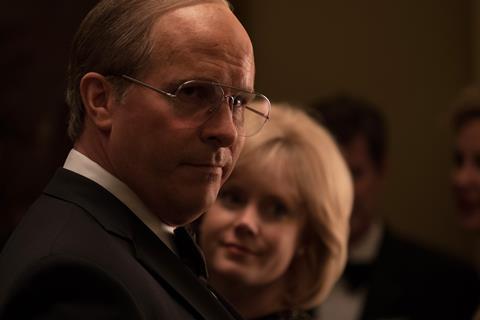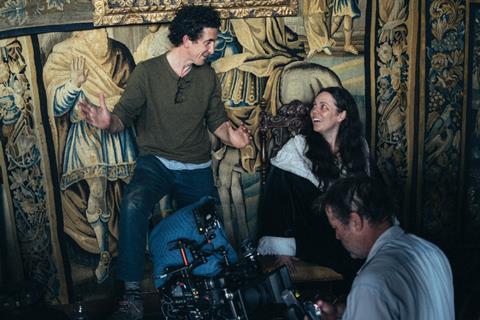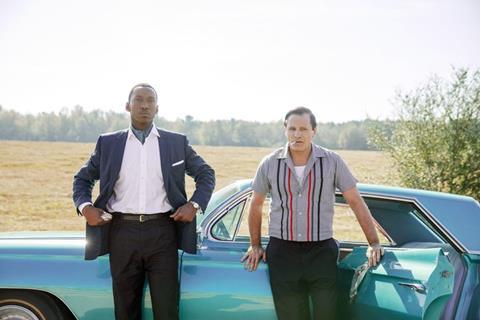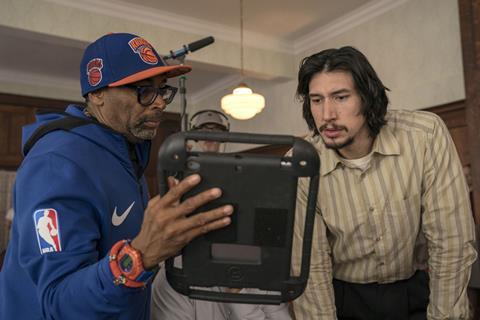From an eccentric costume drama to the story of the ultimate stadium rockers, what all the nominations in the best film editing category have in common is that their stories are based on real life biographies.
Bohemian Rhapsody
Freddie Mercury biopic Bohemian Rhapsody “is the classic narrative arc of alienated artist and inflated ego, who is then humbled and who finally brings the band back together for triumphal come back,” the film’s editor John Ottman, ACE told IBC365.

“We tell it in a down to earth fashion with nothing hyper real about it except for the concert pieces. These, I made a little more stylistic.”
The film is also a triumph of sorts for Ottman who quietly had to battle 20th Century Fox’s intrusion on the final cut and the firing of director and regular collaborator Bryan Singer two thirds through filming.
Cast and crew were at pains to avoid talking about Singer during the film’s promotion for fear that it would become the main story.
“Bryan wasn’t really there in post but then that’s fine because he likes to give me my space to cut a film anyway,” Ottman said. “He’s more worried that if he directs me he might not discover things about the story that I’d create when left to my own devices.”
Ottman’s dual career as a composer mainly on Singer’s films including The Usual Suspects, X-Men 2, Superman Returns and Valkyrie made him a natural choice to edit a musical.
Singer also hired him as composer with the assumption that Bohemian Rhapsody was going to have an underscore. In the end it was decided to stick to Queen’s extensive back catalogue “to keep it pure”, although Ottman embellished a couple of the more emotional scenes with opera, such as when Mercury proposes to Mary.
“It fills the purpose of what underscore would have done but makes it more intelligent in that it’s not done with the score, which would have been typical,” he says.
Charges that the film glosses over Mercury’s true rock and roll lifestyle don’t seem to have impacted its success.
“This was a ten-year saga for producers [Graham King and Queen’s manager Jim Beach] getting approval for every little thing in the script. Once they’d agreed the script Queen weren’t involved editorially that much. But we were in constant struggle with the studio to cut things out mainly because the studio is always concerned about run time.”
Guitarist Brian May sourced the band’s original recordings for use in the sound mix for which Paul Massey, Tim Cavagin and John Casali are Oscar nominated alongside John Warhurst and Nina Hartstone for sound editing.
“As amazing as Queen’s music is they wrote it to be an interactive experience with an audience so the music doesn’t really soar until you hear the audience sing along, applaud and clap,” explains Ottman. “That took a lot of multi-track work to finesse.
“I am a huge fan of watching every frame of all dailies before I cut anything,” he says. “I want to know when I go to bed that I used the best of the best takes that I could find. You never know – one little inflection of an actor’s eyelid could influence the way I cut a scene.”
Vice
Vice is Hank Corwin’s (ACE) second film for director Adam McKay following The Big Short, a satire about the financial crisis. Both films tackle heavyweight political topics and could easily be rendered dull and leaden in the wrong hands.

Vice suggests that George Bush invited Dick Cheney to be Vice President and they negotiated so that Cheney ends up with all the power with Bush not bright enough to realise what he’s agreed to.
That set-up is also a key scene in the film. “Christian Bale (as Cheney) is looking very intently at Sam Rockwell (as George Bush) and that’s one level of the conversation,” Corwin explained in one interview. “But we inserted did a jump cut of Bale’s character laughing at his fantastic win. It’s this humourless laugh. It just conveys so much about the Cheney character and about the situation. It could be argued that we’re leading the audience and indulging in propaganda. And honestly, I can’t dispute that. But life is propaganda. Life is political.”
Corwin’s previous work includes Tree of Life, Natural Born Killers, Snow Falling on Cedars and work as additional editor on JFK, Public Enemies and Moneyball.
The Favourite
It probably takes an editor of extreme patience and rare insight to understand the distinctive vision of auteur Yorgos Lanthimos.
Fortunately, fellow Greek Yorgos Mavropsaridis, ACE has worked with the director from his 2001 film My Best Friend, through his recent films Dogtooth, The Lobster and Killing of a Sacred Deer and has developed an instinct for Lanthimos’ highly original artistic choices.
In the case of The Favourite, this meant coherently piecing together self-consciously oddball cinematic angles courtesy of director of photography Robbie Ryan, Fiona Crombie’s extravagant production design and Johnnie Burn’s unusually modern soundscape.

“The biggest challenge was to deconstruct the linearity of the plot and at the same time stay true to the idiosyncratic filmic language of Yorgos,” says Mavropsaridis. “We wanted the editing style to be used as a counterpoint to the historic period. It had to balance the acting of three excellent actresses and to achieve, imperceptibility, a transition from shade of light to dark emotion.”
The Favourite deploys a range of unusual cinematic tools; “very extreme wide angles, big close-ups, a lot of movement also using extreme wide angles, very high angle shots, extremely low angle shots,” lists Mavropsaridis.
“Fast panning shots at points distorting the eye-line of the actors, at others inspecting them from an extreme distance. At times the actors, as in Citizen Kane, are depicted larger than life. All these formal elements had to be combined in a way that retained their aesthetic elegance while advancing the plot and the viewer’s perception.”
Lanthimos and his editor conjure the mesmeric final shot as the Queen (Olivia Coleman) and Abigail (Emma Stone) realise the unending misery of their situation.
“The final shot is more a composition of shots and the technical difficulties to actually construct it were enormous,” he explains. “For a long time in the edit we finished on a close up of Abigail then we played with different lengths [of shot], and a different order. We spent long hours adding, multiplying, superimposing to find the specific length of time we felt was right for the idea to form in the minds of the character’s and in parallel in that of the audience, that their essential situation was one of futility.
“We do this with simple loops and repetitions and superimpositions and fades, and of course the close ups of two very talented actresses. The slight involuntary tweak in Abigail’s face as the horror of her situation dawns on her, and the wisdom the Queen finds in accepting her pain, a spoilt child no more.”
And the winner is…
As ever the Oscar shortlist could easily have included a number of other artists.
The annual awards of the American Cinema Editor’s (ACE) guild are called Eddies and these are split into multiple categories. Among nominees for best edited feature - comedy were the trio of editors behind Deadpool 2 and Myron Kerstein who made Crazy Rich Asians.
In the ACE best edited dramatic feature section as Tom Cross ACE for First Man, Jay Cassidy, ACE for A Star is Born and Alfonso Cuarón and Adam Gough for Roma. If this is any guide to Oscar glory then the winners in these categories were Yorgos Mavropsaridis and John Ottman.
Green Book
Described as ‘Driving Miss Daisy in reverse’ in the sense that this time a black person is the passenger and the racist is the hired help, Green Book’s strength lies in the chemistry of the two leads and its careful balance of comedy and drama.

Though the true nature of the relationship between African-American pianist Don Shirley (Mahershala Ali) and Tony Vallelonga (Viggo Mortensen), his driver and bodyguard on a tour of the Deep South in 1962, have been disputed, it’s a fact that a Green Book advising non-white travellers which places to avoid was issued.
Much of the salty interaction between the pair takes place in a car, both facing forward, with glances in rear view mirrors. You could imagine it as a stage play but editor Patrick Don Vito deftly keeps the story moving forward with tension and humour.
“That was probably the most difficult thing about it,” he told PostPerspective. “You don’t want the jokes to seem like a joke. You want them to come out of a scene naturally. At first, I cut everything in to see what was working and what seemed too jokey. You start eliminating things that take it to a different type of comedy and you try to keep it more real. That was always the mantra from Pete: “Let’s keep it real. All the comedy needs to come out of the scenes and not seem like it’s too much of a joke.”
Pete is director Peter Farrelly, previously best known for unapologetically un-PC comedies such as There’s Something About Mary and Dumb & Dumber.
Green Book’s pat ending in which Shirley seeks out and is invited into Vallelonga’s family to share a thanks giving meal in harmony is about as far removed from that of BlacKkKlansman as is possible to get.
BlacKkKlansman
Presented as a kind of real-life Shaft, Ron Stallworth - the hero of BlacKkKlansman - is the black activist who in real life infiltrated not just the Klan but also the corrupt, racist system that was the Colorado Springs Police Department in the early ‘70s. So inept is the KKK and its leader David Duke that at times the movie steers into outright comedy even though director Spike Lee’s intent is deadly serious.

“The South is a funny, funny place, sometimes inadvertently so,” says Barry Alexander Brown, the Cheshire-born editor who grew up in Montgomery, Alabama.
The climax of the film cuts to documentary footage of the anti-fascist riots that ended in the murder of protester Heather Heyer in Charlottesville in 2017.
“It carries a very overt political message but neither one of us is afraid of that,” says Brown. “The ending is pretty brutal but very effective. I’ve seen people come out of a screening and know that it’s got under their skin. That’s what want to do, to make you feel something.”
By the same token, he says, the filmmakers are not interested “in beating somebody over the head with a message”.
Ironically, the juxtaposition of past and present scenes is a technique first credited to director DW Griffith, once revered as the father of cinema but since reappraised for the racism in films like Birth of a Nation – which features heavily in early scenes of BlacKkKlansman.
Brown has cut the majority of Lee’s work including Malcolm X. “There’s no real difference between documentary and narrative films – you have to do all the same things; a plot and arc and characters and you are still manipulating an audience. But the narrative form is more interesting to me. Malcolm X and BlacKkKlansman would feel at arms’ length if told as a documentary.”
Next month Brown begins shooting his ninth feature as director on location in Montgomery with Spike Lee as executive producer. Son of the South, which Brown also scripted, is based on the autobiography, The Wrong Side Of Murder Creek by Bob Zellner, grandson of a Klansman.
No African-American has won best director Oscar, with Lee an outsider despite his first nomination this year.
























No comments yet